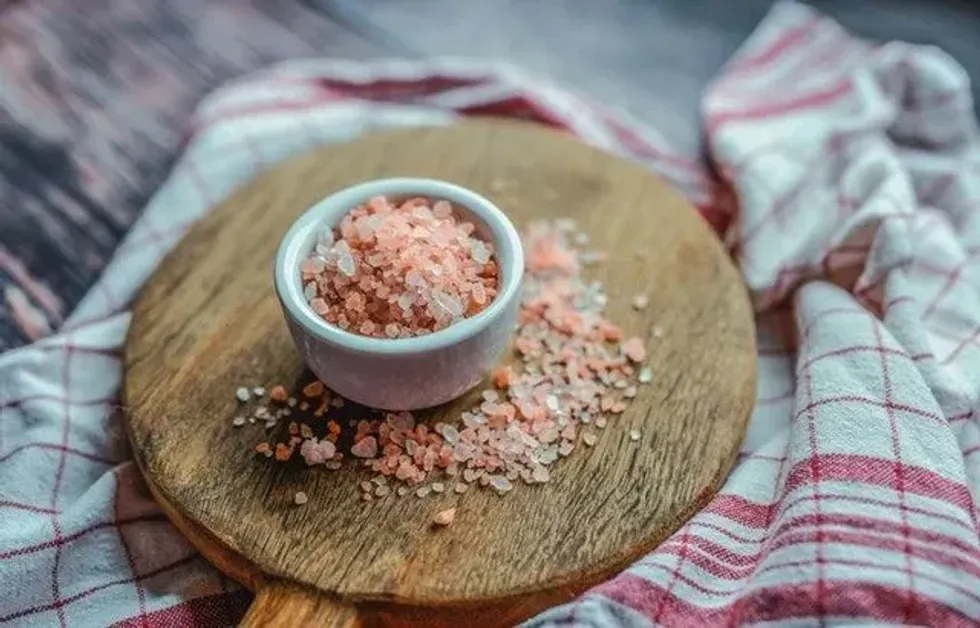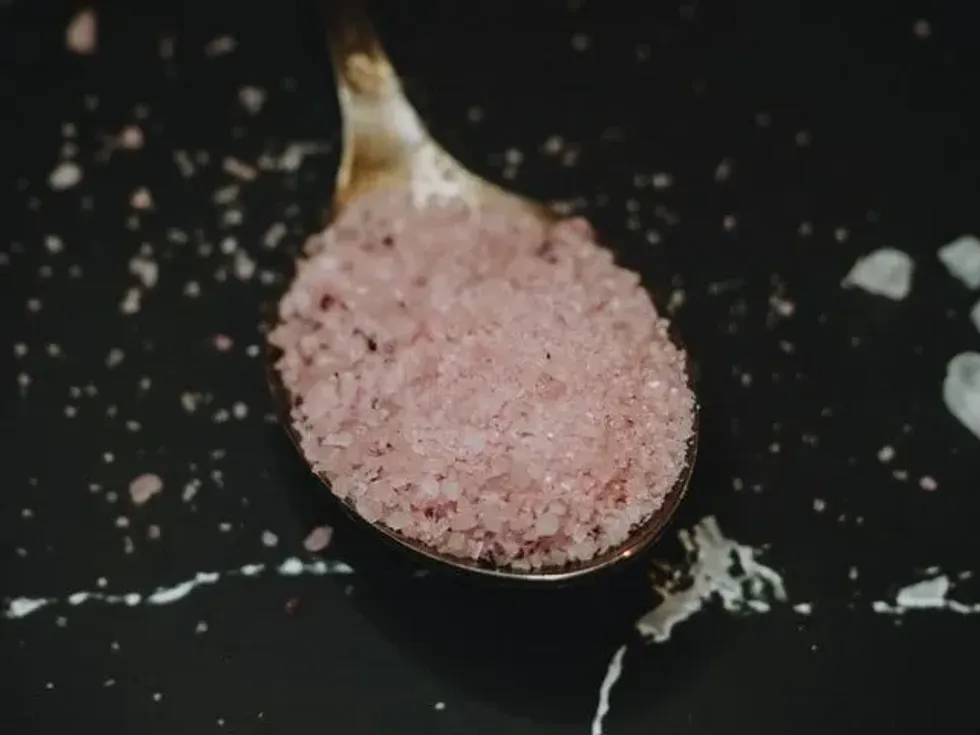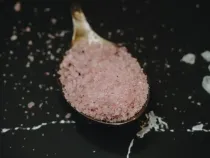62 Himalayan Salt Facts And Its Usage In Various Dishes

Pink Himalayan salt is a rock salt that is used for various purposes for its notable health benefits.
Pink Himalayan salt is a sought-after product because of its pinkish hue and because it is often marketed as a healthier alternative for table salt. The pinkish hue is caused due to the trace minerals found in the salt.
In many cases, Pink Himalayan salt is marketed as sea salt from the Jurassic period, but in reality, the salt formed earlier than the Jurassic period. The salt is believed to have come from a sea or ocean formation that dried up millions of years ago, leaving behind massive salt deposits in caves and mountains.
Himalayan salt has been studied thoroughly and the benefits of Himalayan salt, alongside its harm, are well-known among its users.
Pink Himalayan salt is primarily found in Pakistan, mainly in the Punjab region. The name is derived from the mining location of this popular table salt alternative.
People often describe Pink Himalayan salt to be superior to regular table salt and consider it to be one of the purest salts available in the market. However, most of this belief comes from the fact that pink salt contains higher amounts of nutrients that can be helpful to the human body in various ways.
Similar to regular table salt, Himalayan Pink salt also contains a good amount of sodium content as sodium chloride is necessary for the proper functioning of the human body.
Process Of Himalayan Salt Making
The Himalayan pink salt is processed in Pakistan in large quantities and exported to various parts of the world. These Himalayan salt-making facts are sure to amuse you!
Pink Himalayan salt is a famous condiment and has had various uses in the United States since it became popular. This salt is, today, used for a variety of benefits, from the kitchen to spa treatments. These facts about Himalayan salt making will help you learn more about the salt:
The Pink Himalayan salt is also known as the "white gold" because alongside the pure spring waters of the Himalayan region, the Himalayan salt is also rich in numerous natural elements that are beneficial for the human body.
Pink Himalayan salt, also known as pink salt, is hand-cut salt slabs and is found in the Punjab region of Pakistan and the Himalayan foothills. Himalayan salt is richer in iodine compared to regular table salt.
The Pink Himalayan salt has a distinct pink coloration and structure and is estimated to have been developing under the tectonic pressure and massive hills in the regions.
The Pink Himalayan salt is often advertised as something a rock salt variety that comes from the Himalayan mountain ranges. However, the true source of this salt is Pakistan, where pink Himalayan salt mines are located.
The salt is mined in Khewra, about two hours from Islamabad, the capital of Pakistan. The salts are taken from red-brick hills often found in the marshes of the Khewra region.
The hills or salt range as they are commonly known, are distant branches of the Himalayas. They are part of what is left of a lagoon that existed in the region around 600 million years ago.
Pink Himalayan salt is produced from large crystals of rock that are mined in the salt range and gets its pink-orange coloration from minerals like calcium, magnesium, and potassium.
The salt undergoes minimal processing as it is often used as a healthier version of regular table salt.
Uses Of Himalayan Salt
Pink Himalayan salt is believed to have various health benefits because of its composition. The salt delivers itself in a visually appearing pink color, and people believe that it adds an interesting taste to food. Learn more about the uses of this salt with these facts:
Both regular table salt and Himalayan pink salt have the same chemical formula - NaCl-sodium chloride.
NaCl - a combination of chloride and sodium - both these elements are essential to the human body and most edible salts are majorly composed of these two elements.
Compared to table salt where sodium chloride makes up an estimated 99% of the composition, pink Himalayan salt has 98% sodium chloride and thus, has room for other elements and minerals.
Sodium is essential to the vital functioning of the human body. However, salt consumption should be done in a controlled way as an excess of salt can be harmful. Sodium helps maintain the fluid balance in the body and also helps in the proper functioning of nerves and muscles.
Pink Himalayan salt also contains naturally occurring iodine and just like table salt, does not need to be treated. Iodine is crucial to the human body as it helps in the production of hormones by the thyroid gland that regulates essential bodily functions.
Iodine deficiency can cause Goiter, which in turn can lead to lower production of the vital hormones causing the thyroid gland to enlarge to make up for the reduced hormones thus produced.
Iron is another element present in the Pink Himalayan salt and it is the reason why this rock salt gets its pink-orange color.
An estimated 38.9 ppm of iron can change the appearance of the salt.
Iron helps in the proper growth and development of the body as the human body makes use of iron to produce hemoglobin, a protein in the red blood cells that carry oxygen from the lungs to the other parts of the body, and myoglobin, a protein that provides oxygen to the muscles in the body.
Pink Himalayan salt also contains trace minerals like potassium, calcium, and magnesium, and all of these are essential minerals.
Magnesium is present in Pink Himalayan salt in trace amounts but is known for its various valuable benefits to the human body. Magnesium is essential for various processes in the body, such as maintaining blood sugar levels, regulating nerve and muscle function alongside blood pressure. It is also essential in making protein, DNA, and bone.
Pink Himalayan salt contains calcium in small traces and this element is needed by the human body to build and maintain strong bones. Calcium is also essential for the human nerves, muscles, and heart. It is believed that calcium benefits bone health and in turn, protects the human body against diabetes, high blood pressure, and cancer.
Zinc is another essential nutrient found in Pink Himalayan salt and this nutrient helps your metabolism function and immune system. Zinc is important as it can help in wound healing and maintain your sense of smell and taste.
Pink Himalayan salt also contains phosphorus which is essential in the formation of teeth and bones in the human body. Phosphorus maintains the use of fats and carbohydrates in the body, and it is also needed to produce proteins used for the growth, repair, and maintenance of tissues and cells.
Apart from these trace elements, Pink Himalayan salt also contains traces of Nitrogen, Hydrogen, Fluoride, Boron, Sulfur, Cobalt, Bromine, Molybdenum, Aluminum, Selenium, Cadmium, Manganese, Nickel, and many more other elements.
Pink Himalayan salt, much like natural salt, contains sodium, chloride, phosphate, magnesium that serves as electrolytes that help in the movement of electrical impulses in the human body from cell to cell. You can drink Pink Himalayan salt solution in the morning to provide your body with the essential minerals that it needs.
The minerals present in pink salt are believed to also aid in digestion and help the body in using up the nutrients that you consume daily.
The use of Pink Himalayan salt is not just limited to the kitchen! Mineral bath is a common concept among people and you can use pink Himalayan salt in your bath as it helps in detoxifying and cleansing, as your skin uses the minerals for nourishment. The minerals also help in water retention.
You can also use this rock salt as purifiers! The Himalayan salt lamp is claimed by many to be a capable air purifier. When the lamps are switched on they are believed to release negative ions and are known as "vitamins of the air" because of their various health benefits.
Pink Himalayan salt is also often used as an energizer and most of the logic behind the use is credited to the history and the mining of the pink Himalayan salt.
You are sure to get energized knowing something that originated in the oceans and seas billion of years ago is present in your body and is helping you in maintaining your health.
Some other Himalayan salt products that you can use consist of pink Himalayan salt products like salt therapy and pink salt bath scrubs.
Pink salt caves and rooms are a popular choice in halotherapy or salt therapy. In salt therapy, a person is seated in a salt spa or cave and salty air is spread throughout the room. Ingesting salted air is believed to have several beneficial effects on the human body.
Pink salt bath salts and body scrubs are used in relieving soreness in the muscles and moisturizing and exfoliating the skin. This can help you by regulating the salty water content throughout your body and in turn, help in promoting sinus health, a healthy pH balance in the cells, blood sugar health, and reducing aging signs.
Bath salts also help by assisting the production of hydroelectric energy in cells, supporting respiratory health, regulating sleep, preventing muscle cramps, promoting vascular and bone health. In short, added with water, Pink Himalayan salt adds a whole new level of body maintenance.
Many nutritionists advise pink Himalayan salt as a more nutritious alternative to table salt. Because salt is a common ingredient in food, it is essential to pay attention to the harmful impacts too, as excess sodium can cause high blood pressure.
You can mix salt crystals with coconut or olive oil and use the mixture in a warm bath or warm washcloth for softer and smoother skin.
Harmful Effects Of Himalayan Salt
As much as Pink Himalayan salt is useful to the body, it can also cause damage to the body if ingested in excess. Various medical science studies back the fact that overuse of salt can trigger reactions in the body that can be harmful. These harmful effect facts will help you understand more:
The Pink Himalayan salt, in comparison to coarse salt, is finely grounded in certain cases and an estimated one teaspoon of pink Himalayan salt contains dozens of trace minerals that can cause iodine deficiency in people who use this salt exclusively as a substitute for other salt varieties like sea salt, table salt, and black salt.
Pink Himalayan salt often causes trouble to pregnant women, vegans, and people who rarely consume eggs or dairy products.
Much like table salt, an excess of Pink Himalayan salt can lead to the heart becoming vulnerable to diseases and the body experiencing hypertension. Its unchecked consumption can lead to high blood pressure and cardiovascular issues in diabetic patients.
In patients with high blood pressure, Pink Himalayan salt often heightens the symptoms and issues and causes body imbalance, dizziness, and other physical distress.
Chronic kidney disorders are also caused by a higher salt intake and the condition damages the kidney. The electrolyte imbalance caused by the high sodium amount in the body can lead to dehydration and cramps.
Consuming Pink Himalayan salt can also cause fluid retention, a disorder in which body parts often swell up, leading to harmful conditions.
An excess amount of salt can also lead to the body decreasing its calcium retention, and over time, calcium can get drained out of the body via urine. This calcium loss can harm bone health by making the bones weak and causing osteoporosis.
The electrolyte imbalance caused by higher amounts of sodium in the body can also be risky. It can lead to symptoms like cramps and dehydration in the body.

Facts About Himalayan Salt
Himalayan salt is one of the most demanded salt because of its uses in various day-to-day activities. These amazing Himalayan salt facts will teach you more.
Pink Himalayan salt is famously known as the "purest salt on earth" as it is mined and washed thoroughly before processing. This Himalayan Crystal Salt is uncontaminated with any pollutant or toxins and there are various health benefits of Himalayan salt.
Compared to table salt, pink Himalayan salt has larger crystals and contains less sodium. It also has a saltier flavor in comparison to table salt. Pink Himalayan salt is generally sold in larger crystals like coarse-grained kosher salt.
Pink Himalayan salt in its coarse form contains less sodium per teaspoon, causing people to use the salt in a lower frequency and in turn, reduce sodium intake.
Even though the pink Himalayan salt contains iodine, it is most likely that the amount of iodine is lesser than what is found in iodized salt. Because of this, people with iodine deficiency might have to get their iodine quota elsewhere if they are substituting table salt with pink salt.
Pink Himalayan salt contains around 98% sodium chloride and the rest of the 2% is a combination of various other trace minerals. No significant health benefits have been found for the trace minerals as of today.
The pink coloration in the Pink Himalayan salt comes from the higher number of minerals in the salt compared to regular table salt.
Many believe sea salt to be a healthier alternative to table salt, however, this is not the case anymore. Because of pollution, harmful toxins like mercury, dioxin, and PCBs affect the sea and the sea salt is now required to undergo a refining process. Today's sea salt is not as healthy as it used to be in the past.
Local folktales credit the discovery of the Himalayan salt deposits to Alexander the Great and his army. However, the first recorded usage of salt came from the 1200s when they were used by the Junjua people.
Did You Know...
These random facts about the Himalayas will help you learn more about the origins of this salt:
The name "Himalaya" is derived from a combination of two Sanskrit words 'Hima' and 'Alaya', which translates to 'Snow' and 'Abode', that is, Abode of Snow.
The Himalayan mountain range is spread across various countries like Pakistan, Bhutan, Nepal, China, and Tibet.
The Tilicho Lake, located in Nepal's Annapurna range, is a part of the Himalayan range and stands at 16138.4 ft (4919 m), making it one of the highest lakes in the world.
The Himalayas have a variety of ecological systems. Tropical rainforests can be found at low altitudes, and sub-tropical forests and grassland ecosystems can be found at mid and high altitudes respectively.
The Himalayas are home to 10 of the 14 tallest peaks in the world, including the K2 and Mount Everest. The Indian subcontinent is separated from the Tibetan Plateau by the Himalayas.
Mount Everest was named after Colonel Sir George Everest by Sir Andrew Waugh.
At an altitude of 29,032 ft (8848.9 m), Mount Everest of the Himalayas is the highest peak in the world.
The Himalayas are often called the third pole of Earth because the regions store the highest amount of ice and snow after the South and North pole.
The Himalayas are believed to be around 70 million years old, making the Himalayas the youngest mountain ranges in the world. Scientists believe that South Africa's Barberton Greenstone Belt is the oldest mountain range in the world at 3.2-3.6 billion years old.
Mount Everest is known to be covered with never-melting snow! The glaciers in the region serve as a massive freshwater reservoir.
The Himalayas with its 661 billion T (660 tons) of ice and an estimated 15,000 glaciers is an important part of the Indian subcontinent's sustenance. The mountain range helps an estimated 1.65 billion people as important river systems like the Mekong and Indus get their sustenance from the water reservoirs in the Himalayas.
The Ganges-Brahmaputra, Yangtze, and Indus rivers all originated in the Himalayas.
In 1924 sandstone and limestone rock formations dating back to 450 million years ago were found on the peak of Mount Everest. This proves the theory that Everest was once below sea level.
Due to the effects of climate change, the Himalayas are undergoing various changes.
There are an estimated 40 million people who reside in the Himalayan range. Lots of Tibetian Buddhists and Hindu villages can be found in the northern regions of the Himalayas.
The Himalayas is a diverse landscape and is home to various animal species including musk deer, Tibetan sheep, wild and mountain goats, tigers, snow leopards, black bears, red and giant pandas, and it is also home to bird species like the Himalayan bulbul and the hill partridge.
According to Hindu mythology, Lord Shiva resided in the Himalayas and Mount Kailash is believed to be the site where his palace was situated.
We Want Your Photos!
More for You
See All
Bachelors in Business Administration

Aashita DhingraBachelors in Business Administration
Based in Lucknow, India, Aashita is a skilled content creator with experience crafting study guides for high school-aged kids. Her education includes a degree in Business Administration from St. Mary's Convent Inter College, which she leverages to bring a unique perspective to her work. Aashita's passion for writing and education is evident in her ability to craft engaging content.
Disclaimer
1) Kidadl is independent and to make our service free to you the reader we are supported by advertising. We hope you love our recommendations for products and services! What we suggest is selected independently by the Kidadl team. If you purchase using the Buy Now button we may earn a small commission. This does not influence our choices. Prices are correct and items are available at the time the article was published but we cannot guarantee that on the time of reading. Please note that Kidadl is a participant in the Amazon Services LLC Associates Program, an affiliate advertising program designed to provide a means for sites to earn advertising fees by advertising and linking to Amazon. We also link to other websites, but are not responsible for their content.
2) At Kidadl, we strive to recommend the very best activities and events. We will always aim to give you accurate information at the date of publication - however, information does change, so it’s important you do your own research, double-check and make the decision that is right for your family. We recognise that not all activities and ideas are appropriate for all children and families or in all circumstances. Our recommended activities are based on age but these are a guide. We recommend that these ideas are used as inspiration, that ideas are undertaken with appropriate adult supervision, and that each adult uses their own discretion and knowledge of their children to consider the safety and suitability. Kidadl cannot accept liability for the execution of these ideas, and parental supervision is advised at all times, as safety is paramount. Anyone using the information provided by Kidadl does so at their own risk and we can not accept liability if things go wrong.
3) Because we are an educational resource, we have quotes and facts about a range of historical and modern figures. We do not endorse the actions of or rhetoric of all the people included in these collections, but we think they are important for growing minds to learn about under the guidance of parents or guardians.







